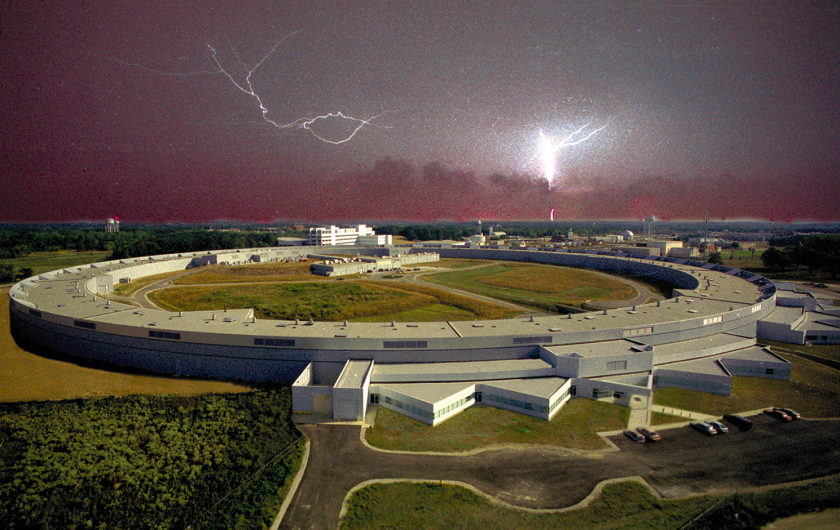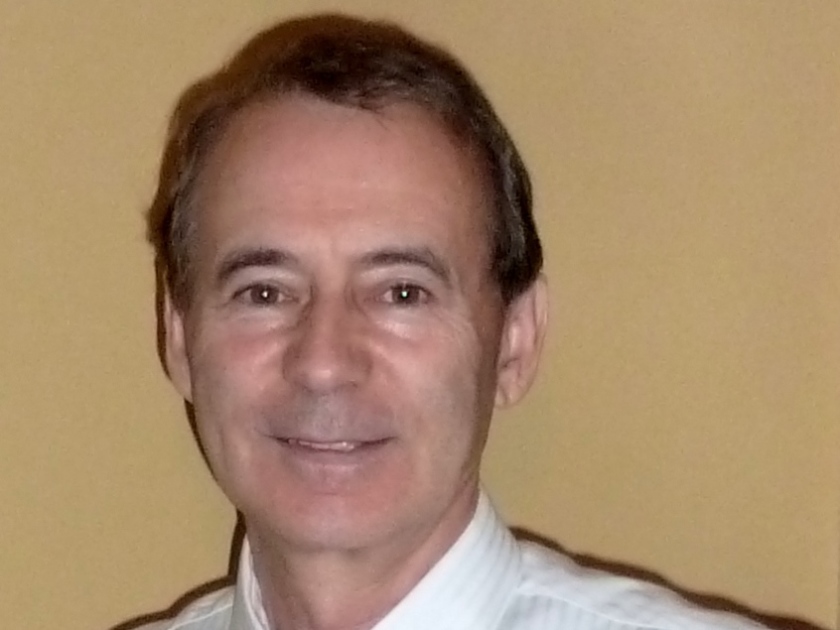D-Lecture: A Light and a Beam

The Advanced Photon Source facility illuminated by lightning. ( © Argonne National Laboratory

Alexander Zholents is the Director of the Accelerator Systems Division at Argonne National Laboratory.
Dr. Alexander Zholents from Argonne National Laboratory will present on 18th December 2014 his thoughts on "A Light and a Beam: a Theme with Variations". The presentation will be given at the lecture hall of the Wilhem-Conrad-Röntgen-Campus of HZB at 2 pm. After the presentation, we invite you to “Glühwein” and informal discussion.
What: D-Lecture
When: 14:00, 18. december 2014
Where: BESSYII, Lecture Hall
In his Distinguished Lecture, Aexander Zholents will discuss various techniques for making better beams of charged particles and beams better matched to applications. His examples will include the optical stochastic cooling, formation of the electron bunches for free-electron lasers, generation of x-rays pulses suitable for four-wave mixing experiments, laser-assisted electron beam conditioning for free-electron lasers, beam conditioning in storage rings for generation of picosecond x-ray pulses and more. Alexander Zholents is the Director of the Accelerator Systems Division at Argonne National Laboratory. His research interests are focused on design, construction, commissioning and operations of synchrotron radiation sources and x-ray free-electron lasers.
We are happy to inform you that we will provide you with a shuttle from Wannsee to Adlershof and return. If you like to use this shuttle for one-way, return or both, then please send an e-mail to jennifer.bierbaum@helmholtz-berlin.de. The shuttle from Wannsee will leave at 1 pm and return at 4 pm (sharp).
red.
https://www.helmholtz-berlin.de/pubbin/news_seite?nid=14108;sprache=en
- Copy link
-
Battery research with the HZB X-ray microscope
New cathode materials are being developed to further increase the capacity of lithium batteries. Multilayer lithium-rich transition metal oxides (LRTMOs) offer particularly high energy density. However, their capacity decreases with each charging cycle due to structural and chemical changes. Using X-ray methods at BESSY II, teams from several Chinese research institutions have now investigated these changes for the first time with highest precision: at the unique X-ray microscope, they were able to observe morphological and structural developments on the nanometre scale and also clarify chemical changes.
-
BESSY II: New procedure for better thermoplastics
Bio-based thermoplastics are produced from renewable organic materials and can be recycled after use. Their resilience can be improved by blending bio-based thermoplastics with other thermoplastics. However, the interface between the materials in these blends sometimes requires enhancement to achieve optimal properties. A team from the Eindhoven University of Technology in the Netherlands has now investigated at BESSY II how a new process enables thermoplastic blends with a high interfacial strength to be made from two base materials: Images taken at the new nano station of the IRIS beamline showed that nanocrystalline layers form during the process, which increase material performance.
-
Hydrogen: Breakthrough in alkaline membrane electrolysers
A team from the Technical University of Berlin, HZB, IMTEK (University of Freiburg) and Siemens Energy has developed a highly efficient alkaline membrane electrolyser that approaches the performance of established PEM electrolysers. What makes this achievement remarkable is the use of inexpensive nickel compounds for the anode catalyst, replacing costly and rare iridium. At BESSY II, the team was able to elucidate the catalytic processes in detail using operando measurements, and a theory team (USA, Singapore) provided a consistent molecular description. In Freiburg, prototype cells were built using a new coating process and tested in operation. The results have been published in the prestigious journal Nature Catalysis.
